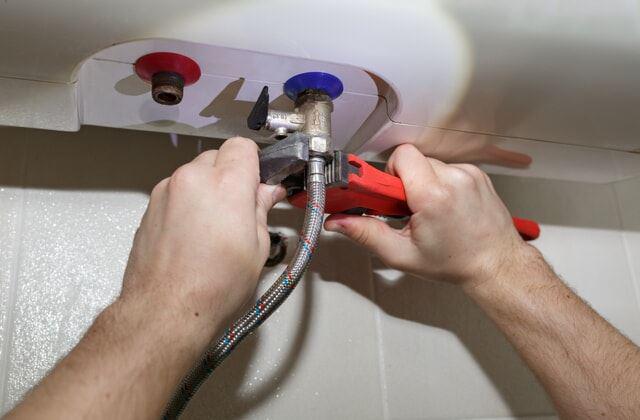Effective Techniques for Maintaining Your Home's Hot Water System
Effective Techniques for Maintaining Your Home's Hot Water System
Blog Article
Are you currently searching for advice around Tips For Maintaining Your Hot Water Heater?

Hot water is necessary for daily convenience, whether it's for a refreshing shower or washing recipes. To ensure your warm water system runs efficiently and lasts much longer, normal maintenance is crucial. This article offers sensible ideas and understandings on how to preserve your home's warm water system to avoid interruptions and pricey repairs.
Intro
Keeping your home's hot water system may appear daunting, however with a couple of straightforward steps, you can guarantee it runs efficiently for years to find. This overview covers every little thing from recognizing your warm water system to do it yourself upkeep tips and understanding when to employ specialist aid.
Importance of Keeping Your Warm Water System
Normal maintenance not only extends the lifespan of your hot water system however also ensures it operates efficiently. Overlooking maintenance can result in reduced effectiveness, higher energy bills, and even early failing of the system.
Indicators Your Warm Water System Demands Maintenance
Understanding when your hot water system needs interest can avoid major issues. Look out for indicators such as irregular water temperature level, odd noises from the heating unit, or rusty water.
Flushing the Water Heater
Flushing your water heater removes sediment build-up, boosting performance and extending its life.
Checking and Changing Anode Rods
Anode poles stop rust inside the tank. Inspecting and replacing them when broken is vital.
Complex Problems Requiring Professional Aid
Instances include major leakages, electrical problems, or if your hot water heater is continually underperforming.
Regular Expert Maintenance Conveniences
Specialist upkeep can include comprehensive evaluations, tune-ups, and ensuring conformity with security standards.
Evaluating and Readjusting Temperature Level Settings
Changing the temperature setups makes sure optimal performance and safety and security.
Do It Yourself Tips for Maintenance
You can execute a number of maintenance jobs yourself to keep your warm water system in top problem.
Checking for Leakages
Frequently inspect pipelines and connections for leaks, as these can cause water damage and higher expenses.
Recognizing Your Warm Water System
Before diving right into upkeep tasks, it's handy to comprehend the standard elements of your warm water system. Commonly, this includes the hot water heater itself, pipes, anode poles, and temperature controls.
Month-to-month Maintenance Tasks
Routine monthly checks can aid catch small issues before they intensify.
Testing Pressure Relief Valves
Examining the pressure safety valve ensures it operates correctly and stops too much pressure buildup.
Protecting Pipelines
Insulating warm water pipelines reduces heat loss and can save power.
When to Call a Professional
While DIY upkeep is beneficial, some problems need professional know-how.
Conclusion
Regular maintenance of your home's warm water system is essential for efficiency, durability, and cost savings. By complying with these ideas and recognizing when to seek professional assistance, you can make sure a reliable supply of hot water without unforeseen disturbances.
How to Maintain an Instant Hot Water Heater
Before tinkering with your hot water heater, make sure that it’s not powered on. You also have to turn off the main circuit breaker and shut off the main gas line to prevent accidents. Also turn off the water valves connected to your unit to prevent water from flowing into and out of the appliance. 2. When you’re done, you have to detach the purge valves’ caps. These look like the letter “T†and are situated on either side of the water valves. Doing so will release any pressure that has accumulated inside the valves while at the same time avoid hot water from shooting out and burning your skin. 3. When the purge valves’ caps are removed, you have to connect your hosing lines to the valves. Your unit should have come with three hoses but if it didn’t, you can purchase these things from any hardware or home repair shops. You can also get them from retail stores that sell water heating systems. Read the user’s manual and follow it to complete this task properly. When the hosing lines are connected, open the purge port’s valves. 4. You should never use harsh chemical cleaners or solutions when cleaning your unit. Make use of white vinegar instead. It should be undiluted and you’ll probably use about 2 gallons. 5. Now flush your water heater. This task should probably take about 40 minutes. We can’t give you specific directions for this because the procedure is carried out depending on the type, model and brand of your heater. With that being said, refer to the user’s manual. 6. When you’re done draining the unit, you have to turn off the purge port valves again. Remove the hosing lines that you earlier installed on each of the water valves. Put the valve caps (purge port) back in their respective places and be very careful so as not to damage the rubber discs that are found inside these caps. 7. Now that everything’s back in place, check your user’s manual again to find out how to reactivate your water heating system. 8. Once it is working, turn one of your hot water faucets on just to let air pass through the heater’s water supply pipes. Leave the tap on until water flows smoothly out of it. https://www.orrplumbing.com/blog/2014/september/how-to-maintain-an-instant-hot-water-heater/

Hopefully you enjoyed our piece on Water Heater Maintenance Tips You Can't Afford to Forget. Thanks a lot for finding the time to read through our posting. Are you aware of somebody who is truly interested in the subject? Feel free to share it. Thanks a lot for your time spent reading it.
Get A Free Estimate Report this page